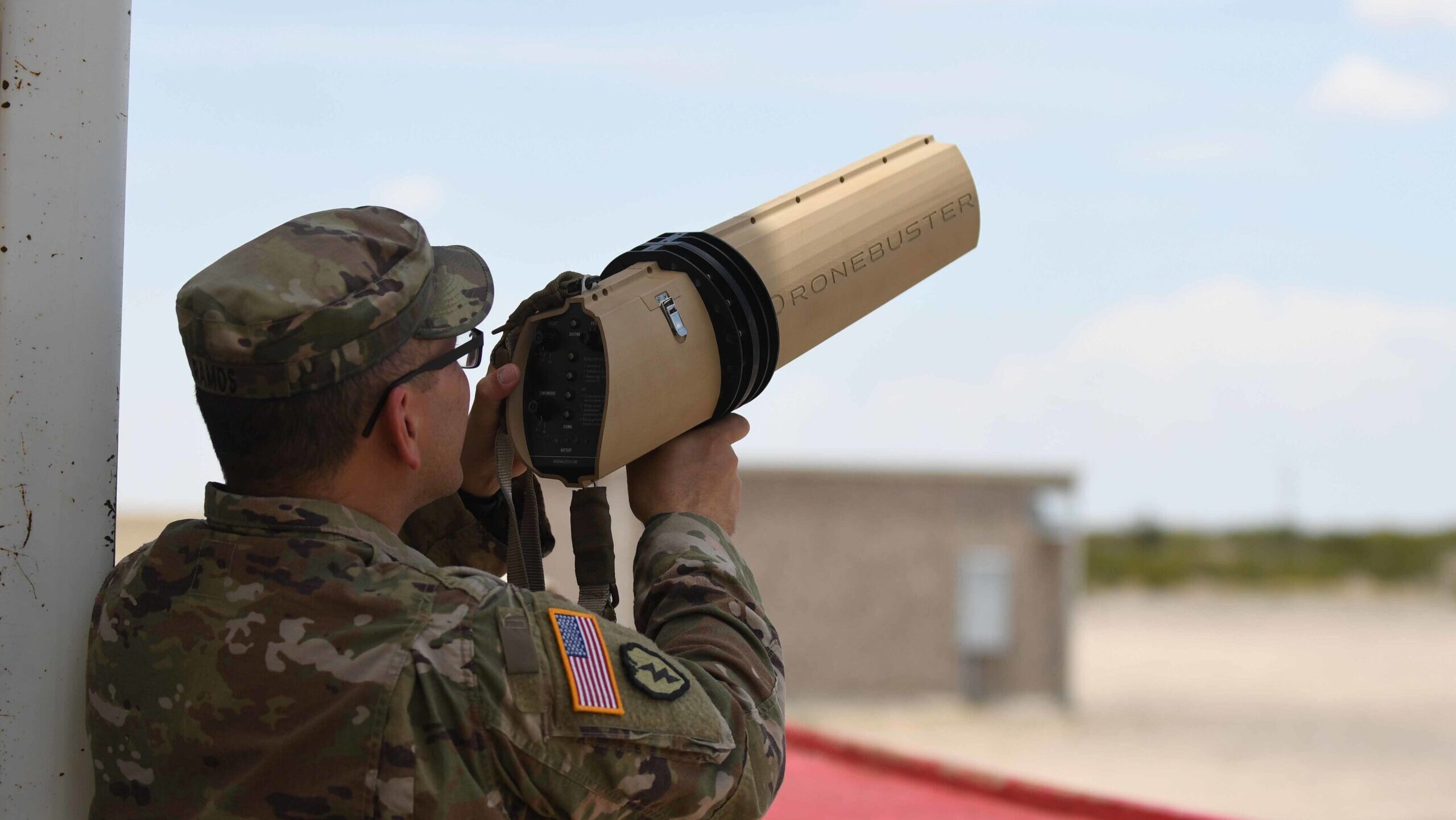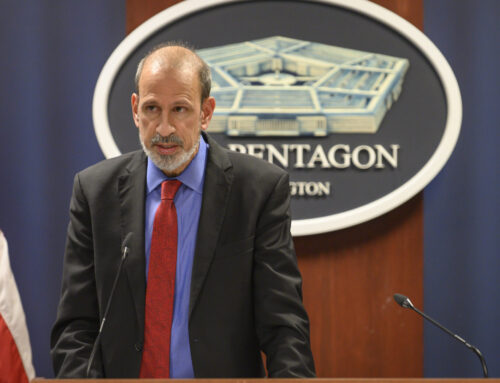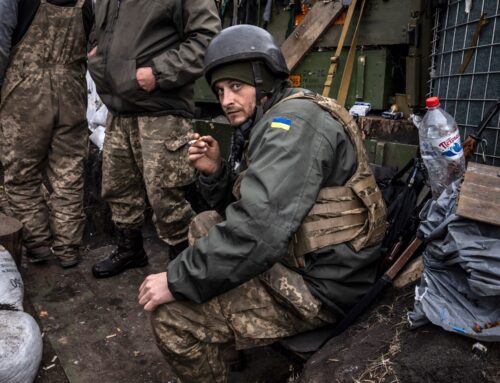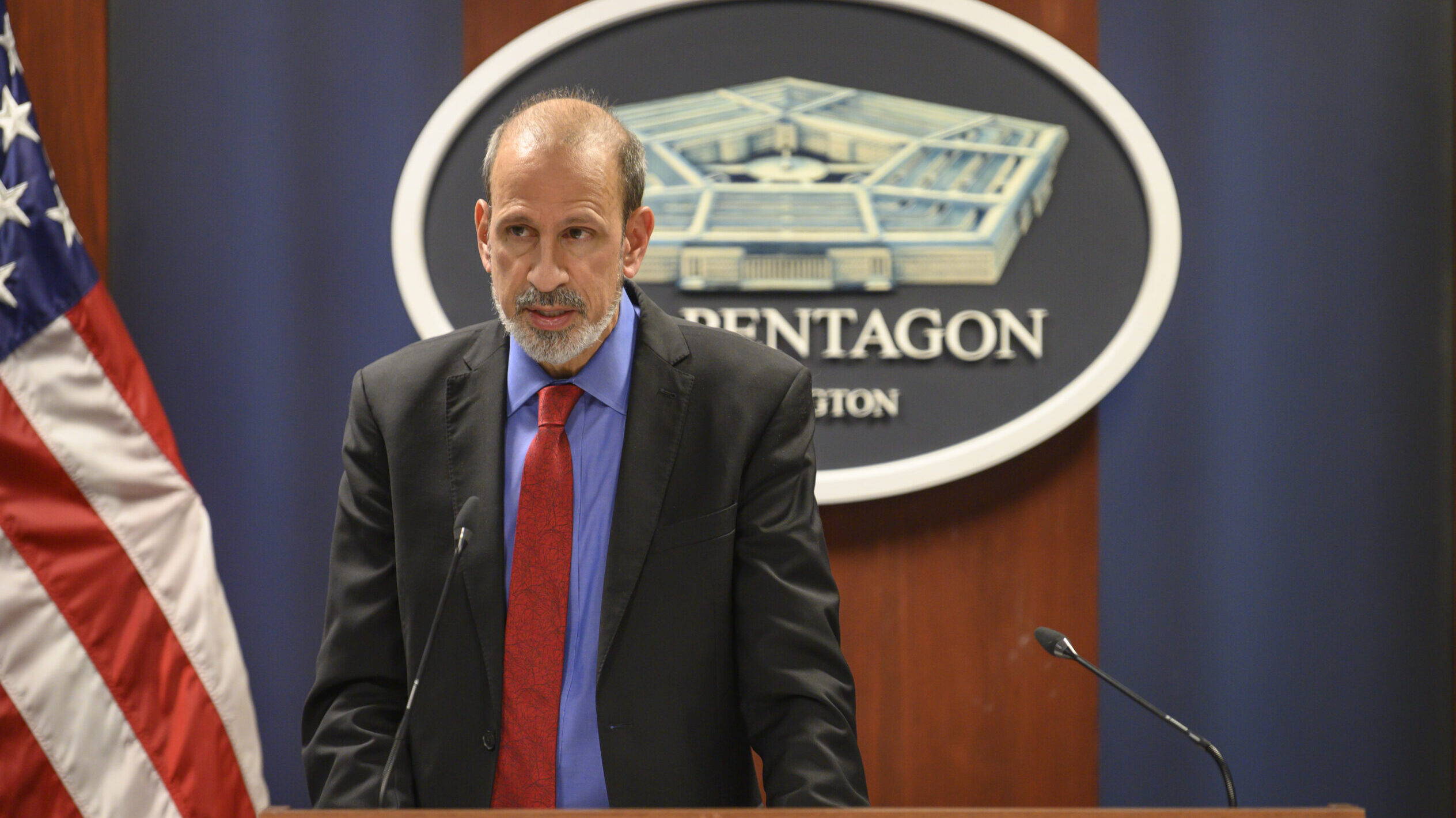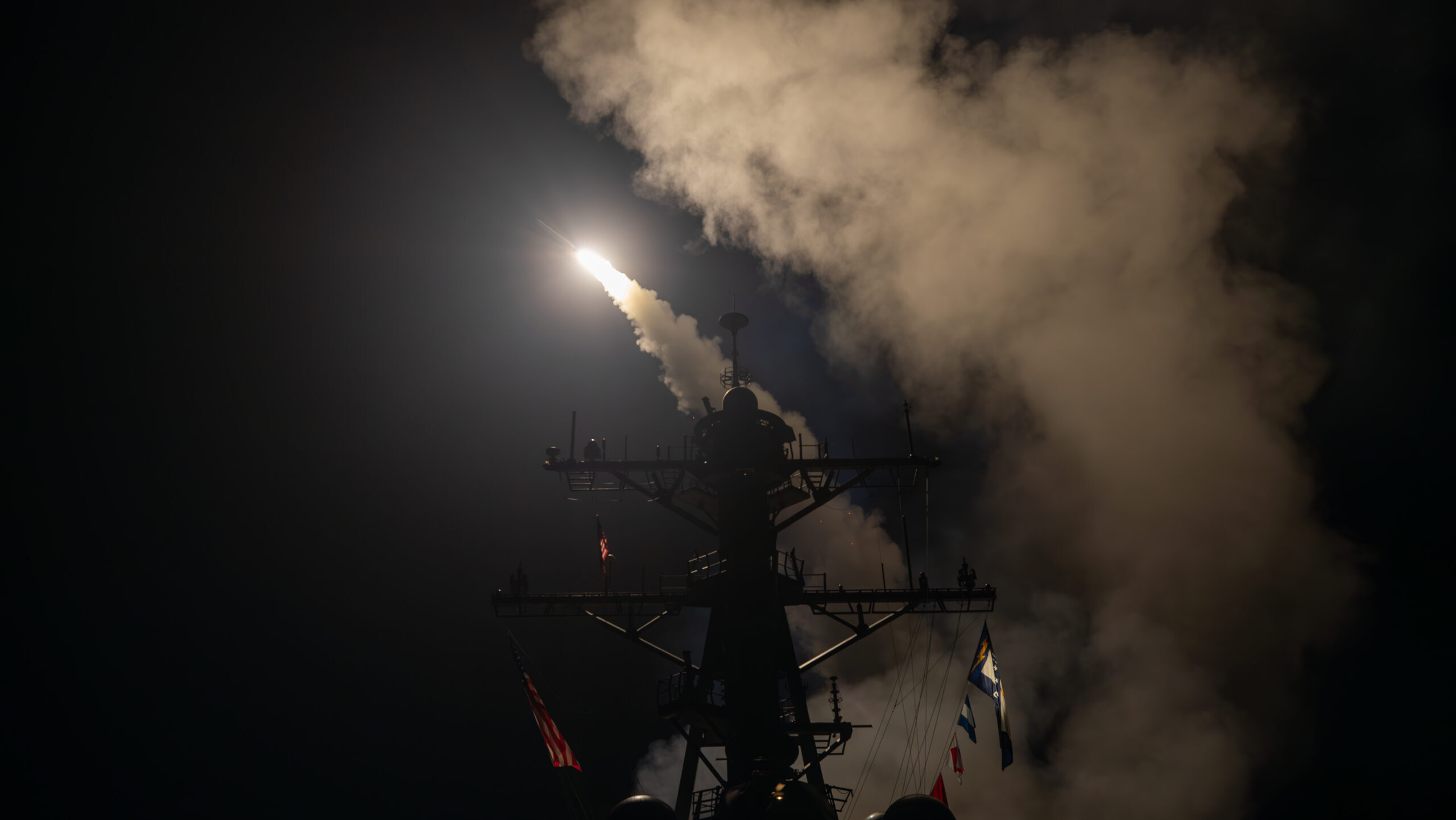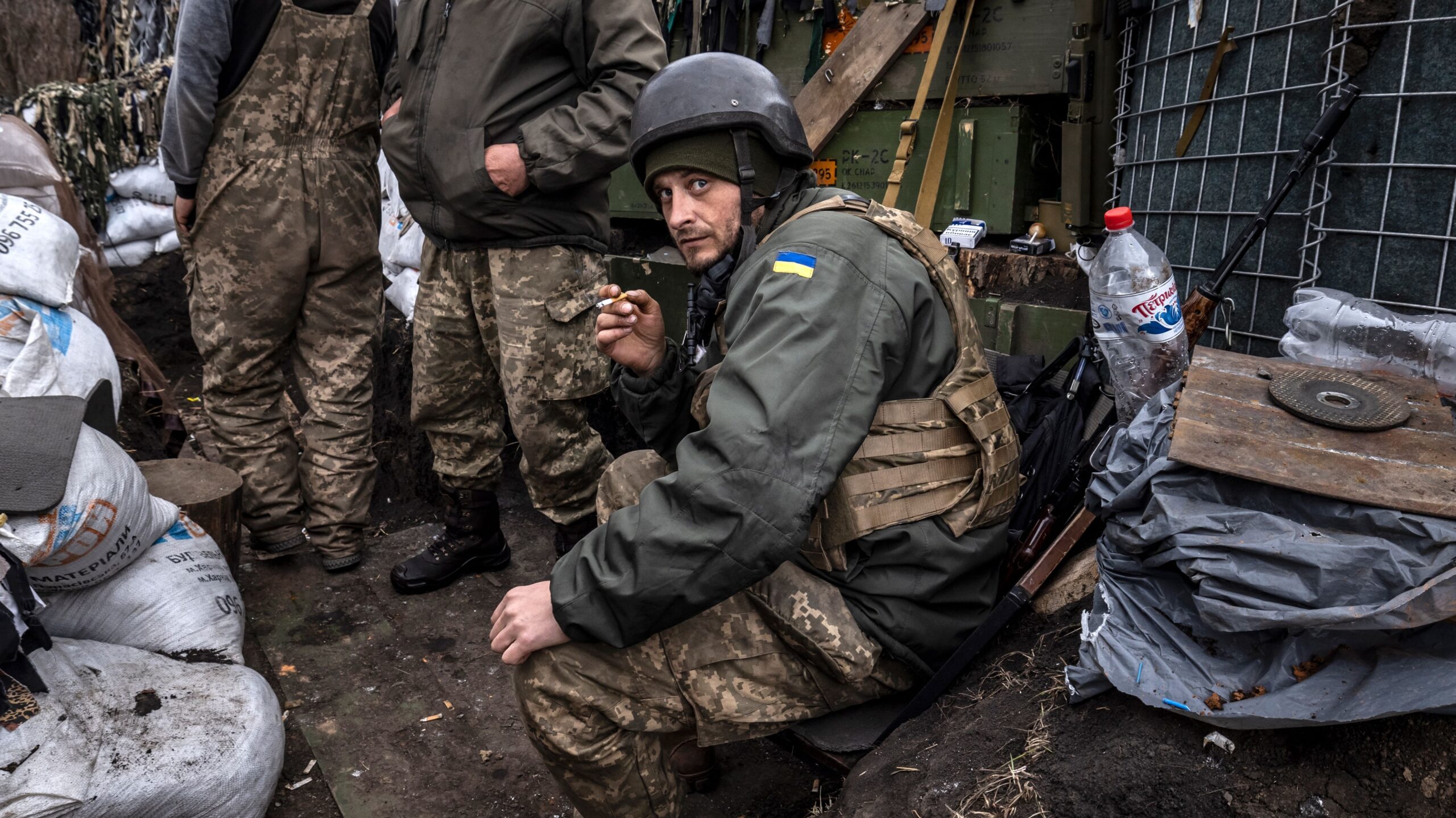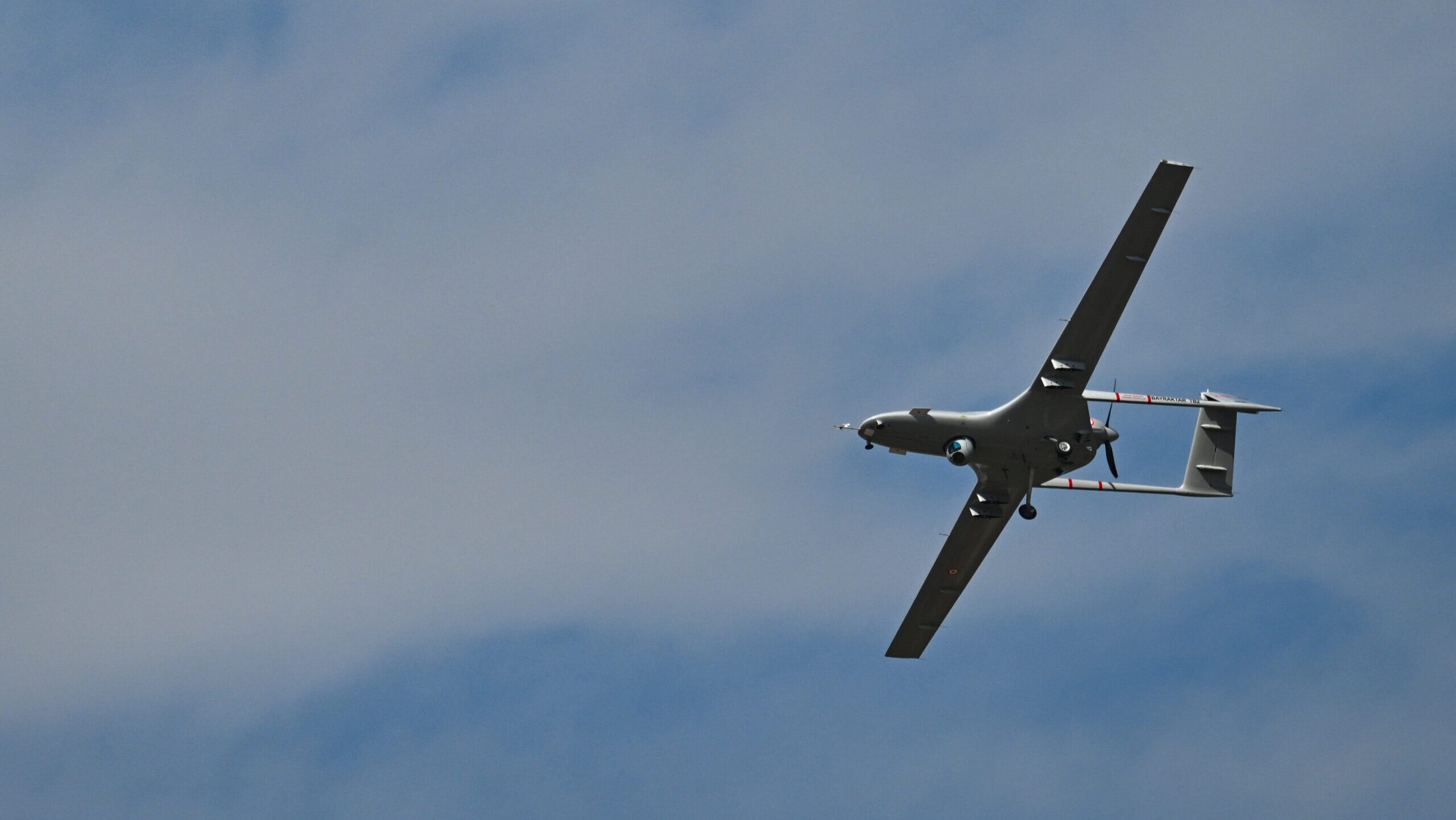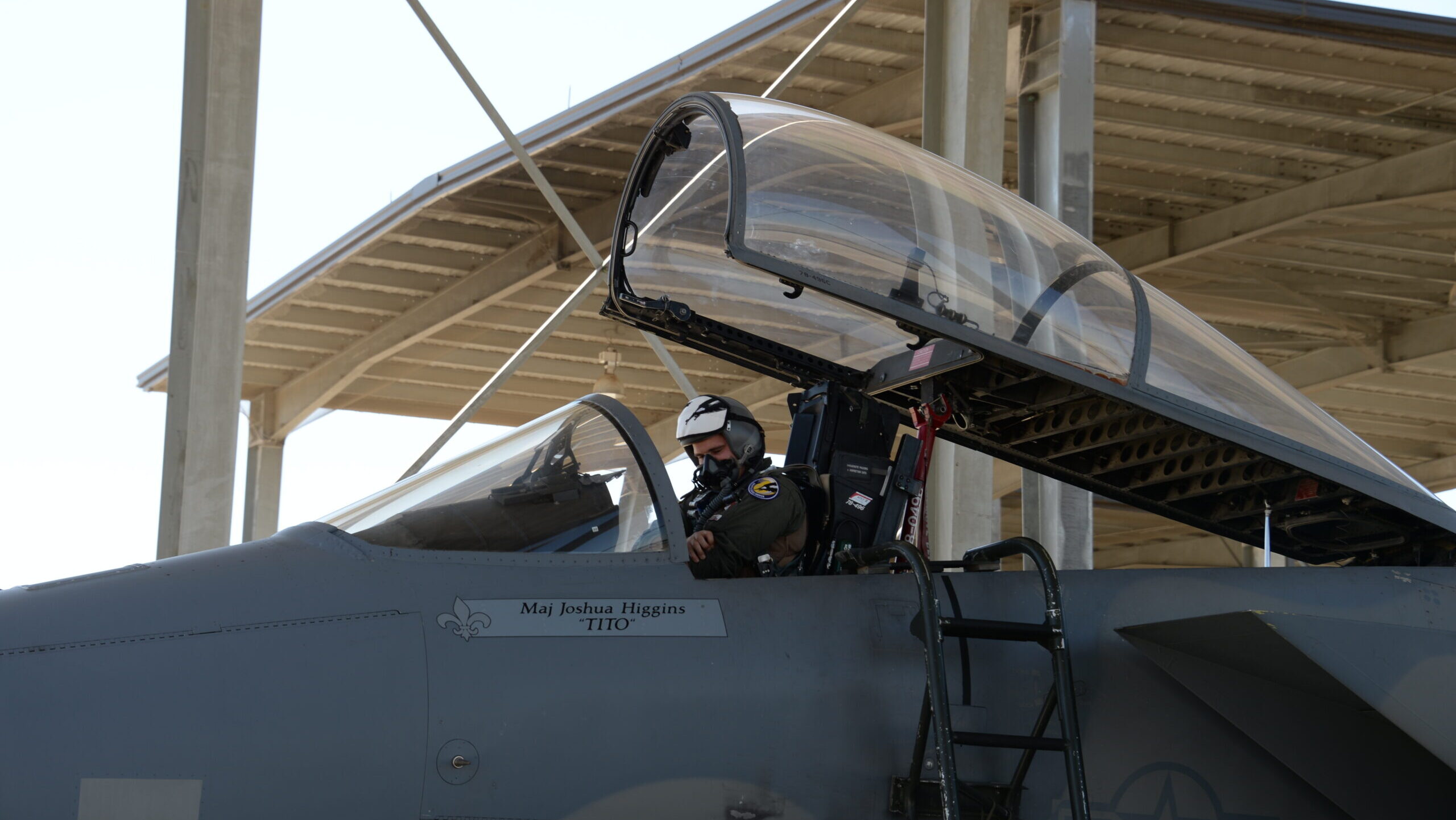Soldiers from 5th Armored Brigade, First Army Division West, developed a course of instruction to counter the threat of commercial, off-the-shelf unmanned aerial surveillance vehicles at McGregor Range Complex, N.M., June 28, 2019. (Photo by Staff Sgt. Mylinda DuRousseau)
WASHINGTON — The Pentagon has greenlit a second Replicator initiative, this time taking aim at the problem of countering small drones at US military installations across the globe, the department announced today.
In a Sept. 27 memo detailing the new effort, Defense Secretary Lloyd Austin charged Deputy Defense Secretary Kathleen Hicks with developing a plan for Replicator 2, with the intent of seeking funding for the new project in the upcoming fiscal 2026 budget request and fielding “meaningfully improved” counter-drone capabilities within 24 months of receiving money from Congress.
“I am confident the Replicator initiative will complement and advance the significant C-sUAS [counter small unmanned aerial systems] work already underway in the DoD,” Austin stated in the memo. “The expectation is that Replicator 2 will assist with overcoming challenges we face in the areas of production capacity, technology innovation, authorities, policies, open system architecture and system integration, and force structure.”
Pentagon officials will have only three months to get the ball rolling on Replicator 2. Left unsaid in the memo is that while the Biden-era Defense Department will start work on the initiative, it will be up to a future administration to decide whether to actually include funding it in the FY26 budget, or to even continue Replicator at all.
Under the first Replicator, the Pentagon sought to field thousands of inexpensive, attritable unmanned systems in multiple domains over two years. The effort, a pet project of Hicks, was launched in August 2023 and has resulted in two tranches of small drones being purchased or selected including both aerial and maritime systems.
With the Pentagon “on track” to meet the fielding goal of the first Replicator initiative next summer, the department assessed “validated joint capability gaps” over a period of several months to determine where to focus Replicator next, Austin said in the memo.
With Ukraine providing a blueprint for how cheap, commercially-made drones can be used to overwhelm an adversary, the proliferation of small drones — both from curious aviation geeks and hobbyists as well as by more nefarious actors — has proven to be a difficult problem for the US military as it seeks to secure its bases. In March, the Senate Armed Services Committee held a classified briefing at drone incursions after a series of occurrences at Langley Air Force Base, Va., in December.
Hicks will work with Adm. Christopher Grady, Vice Chairman of the Joint Chiefs of Staff, as well as heads of the services and combatant commands through the Innovation Steering Group, to formulate the plan for Replicator 2.
The Defense Innovation Unit will be the office primarily responsible for the effort, but will work with the undersecretary of defense for acquisition and sustainment, who serves as the department’s C-sUAS principal staff assistance, the memo stated.
“The Military Departments are largely responsible for the development, production, and fielding of capabilities related to the Replicator 2 effort,” Austin stated. “The Replicator 2 Initiative will leverage the work of the Counter Uncrewed Systems Warfighter Senior Integration Group, and collaborate closely with other ongoing efforts.”
During an interview with Breaking Defense this morning, Army Undersecretary Gabe Camarillo said his service is all in on Replicator 2 and weighing its options for both existing systems and ones that could be developed.
“All of the services will be looking at participating in replicator as a way to ensure that we can break down barriers in terms of policy, ensure that we are addressing production and manufacturing challenges and cohesively investing R&D [research and development] funding to try to get the next generation capabilities that we can produce and field at scale,” he said.
Camarillo declined to disclose which systems the Army could put forward as potential contenders for Replicator 2 funding, noting it could be a mix of existing systems or ones in development, but said the project will be looking at “defense of fixed sites” both in and outside of the continental United States.


